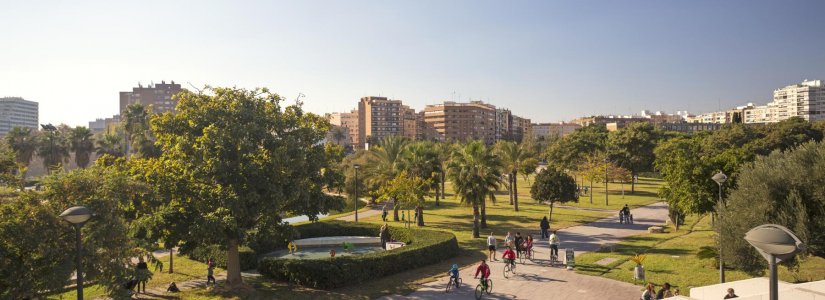About Valencia
Since ancient times, Valencia has been reknown for its radiant light, maritime spirit and fertile soil. Mediterranean by nature, here you can see relics of Roman, Visigoth and Islamic cultures, as well as notable examples of all styles of art and culture. Over the last years, the city has shown its splendour to the world as the host of major international events such as the America’s Cup regattas or F1 European Grand Prix.
Valencia enjoys a warm climate for most of the year, boasting an average temperature of 20º C and around 300 days of sun per year.
Don’t miss
Valencia surprises visitors with its harmonious blend of antiquity and modernity. A visit to the old town is a must. There you’ll find everything from the bustling Plaza de la Reina and Plaza de la Virgen, between which is located the Cathedral with its famous bell tower, El Miguelete, and the Serranos and Quart Towers, the only two perfectly-conserved city gates. Strolling through the Barrio del Carmen, you’ll arrive at the jewel of civil gothic architecture, the Lonja de la Seda (UNESCO World Heritage) which is situated opposite the modernist Central Market.
All of these contrast with the City of Arts and Sciences, designed by Valencia’s own Santiago Calatrava. The atmosphere inside this spectacular architectural complex, which lies in the former Turia riverbed, makes it one of the most worthwhile visits of all. Hiring a bicycle is highly recommended here, as you can cycle the 10 km along the riverbed which crosses the city, and take a quick trip to the African plains with a visit to Bioparc, a new zoo-immersion concept. Nearby is the bus stop for the Albufera Bus Turistic which takes you on a two-hour visit to the Albufera National Park where you can take a trip in an albuferenc, little boats used to go fishing in the lake, or visit a barraca, the houses where the families of fishermen used to live. Furthermore, Valencia boasts a seven-kilometre stretch of beaches, where you can enjoy some of the city’s traditional dishes, as the paella, on the seafront.
Art lovers are spoilt for choice, with over 30 museums to choose from. Some house contemporary art, such as the IVAM. On the other hand, you have the Museum of Fine Arts, the second largest art gallery in Spain, after the Prado Museum.
Things To Do in Valencia
|
|
Paella with a view of the sea
The Moors introduced rice to the city, paving the way for what soon became Valencia’s signature dish, and the hallmark of Spanish cuisine around the world: paella. You can sample some in one of the restaurants along the Playa de las Arenas, which offer panoramic views of the sea, or you can head to one of the eateries situated right in the heart of the Albufera Natural Park. It’s a feast for the senses. Bon appétit! |
|
 |
Go for tapas Grilled cuttlefish, steamed mussels, serrano ham, clams, esgarraet, baby squid and patatas bravas all delight diners at various hotspots in the market place, extending to the Lonja (the Silk Exchange), Plaza del Collado, Plaza del Negrito, and the bars along Calle Caballeros, finishing up at the Plaza de la Virgen. A cold beer or a glass of sangria are the most typical accompaniments. |
|
 |
Take in Valencia from atop the Miguelete bell tower Don’t miss the opportunity to enjoy the spectacular views from Valencia's most emblematic tower. The views from the top of El Miguelete are a must-see. You'll have to walk up a long 51-metre high spiral staircase with 207 steps to reach the terrace around the belfry, but it's well worth the climb, with a spectacular 360º view of the city from the top. |
|
 |
The Valencia Silk Route Discover the hidden threads of the Valencia Silk Route. A stroll through the Velluters district, the Silk Museum, the Silk Exchange or Lonja de la Seda (UNESCO world heritage site) and the typical Valencian costume shops. |
|
 |
Cycle through the Turia Gardens A bicycle ride through the Turia Gardens will make you feel at one with nature whilst being in the centre of the city. The nine-kilometre route starts off from the Cabecera Park. From here, you can see museums, monuments and bridges dating from the late medieval period up to the present day as you pass by. The pièce de résistance — arriving at The City of Arts and Sciences. |
For further information on the city and its surrounding area you can visit the following sites:

